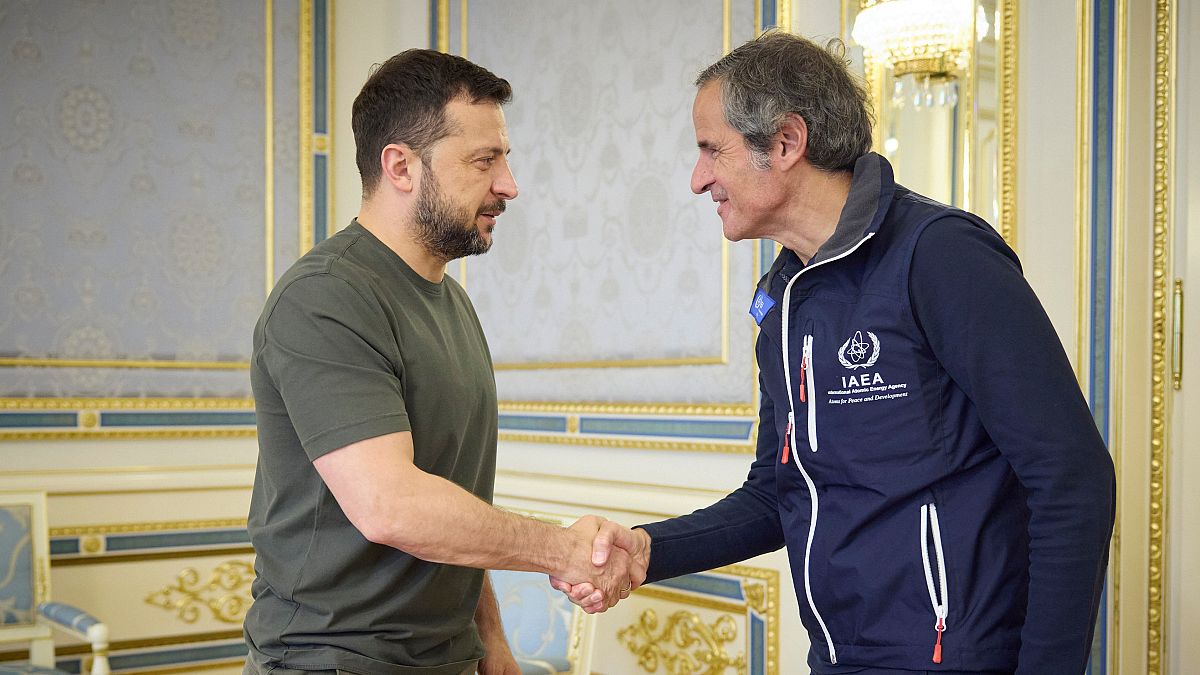The situation at Europe’s largest nuclear power plant, Zaporizhzhia, in Ukraine has been described as “very fragile” by the head of the UN’s nuclear watchdog, Rafael Grossi. This comes after fresh attacks near the Russian-occupied plant, leading to concerns about a potential nuclear accident. Grossi has vowed to expand the agency’s inspections to include critical electricity supplies to prevent such a disaster. In response to criticism for visiting Russia’s Kursk power plant, Grossi stated that the IAEA must remain engaged and objective to be relevant during this international crisis.
The Zaporizhzhia plant has faced artillery shelling that damaged its power access, creating the risk of a blackout that could lead to a disaster due to lack of cooling. Energoatom, the plant’s operator, blamed Russia for the attacks. Analysts have assessed that an explosion at the plant could produce radiation and induce panic, but the broader radiation risk would be relatively low compared to the Chernobyl disaster in 1986. With a potential easterly wind direction, radiation could be pushed towards Russia. The Zaporizhzhia region, along with three others, was partially annexed by Russia in September 2022, following its invasion of Ukraine earlier in the year.
Grossi, along with a team of IAEA experts, has been meeting with Ukrainian officials to assess the situation at Zaporizhzhia and ensure the safety of the plant. The ongoing attacks in the area, along with the damage to Ukraine’s grid, pose serious threats to the country’s power supply, crucial for its nuclear power stations. Grossi noted that expanding inspections to include electricity substations providing power to the nuclear plants is an important step to enhance safety measures. This move was agreed upon with Ukrainian President Zelenskyy to provide additional support during this critical time.
Despite criticism for visiting a Russian power plant, Grossi emphasized the importance of the IAEA maintaining objectivity and technical engagement to be relevant during this international crisis. The situation at Zaporizhzhia remains precarious, with the risk of a power blackout that could lead to a potential disaster due to lack of cooling. Analysts have indicated that while an explosion at the plant could generate radiation and panic, the broader radiation risk would be limited, with the direction of the wind potentially pushing radiation towards Russia.
The Zaporizhzhia region, along with three others, was unlawfully annexed by Russia following its invasion of Ukraine in 2022. This has further escalated tensions in the area and raised concerns about the safety of the nuclear power plant located in the region. Grossi’s commitment to expanding inspections to include critical electricity supplies is a significant step towards preventing a potential nuclear accident at Zaporizhzhia. By engaging with Ukrainian officials and exploring ways to enhance safety measures, the IAEA aims to support the country during this challenging time.
As Grossi and his team continue to assess the situation at Zaporizhzhia and work with Ukrainian authorities, the focus remains on preventing a catastrophe at Europe’s largest nuclear power plant. The ongoing attacks in the area and damage to the country’s power grid present significant challenges to ensuring the safety of the nuclear facilities. By expanding inspections and collaborating with Ukrainian officials, the IAEA aims to provide the necessary support to protect the plant and prevent any potential disasters. Despite the fragile situation at Zaporizhzhia, efforts are being made to enhance safety measures and address the critical issues at hand.











